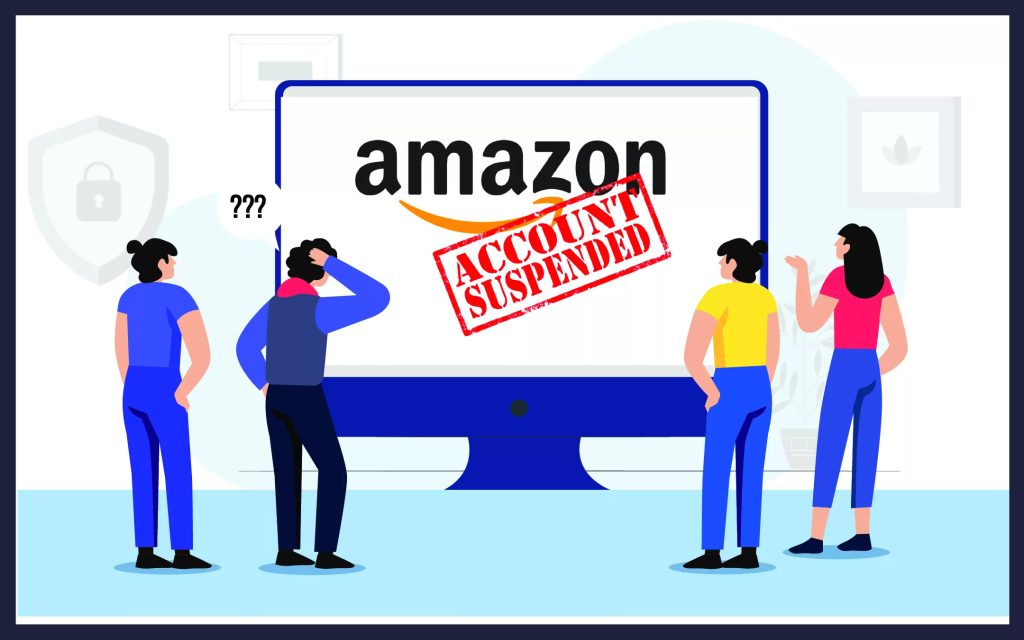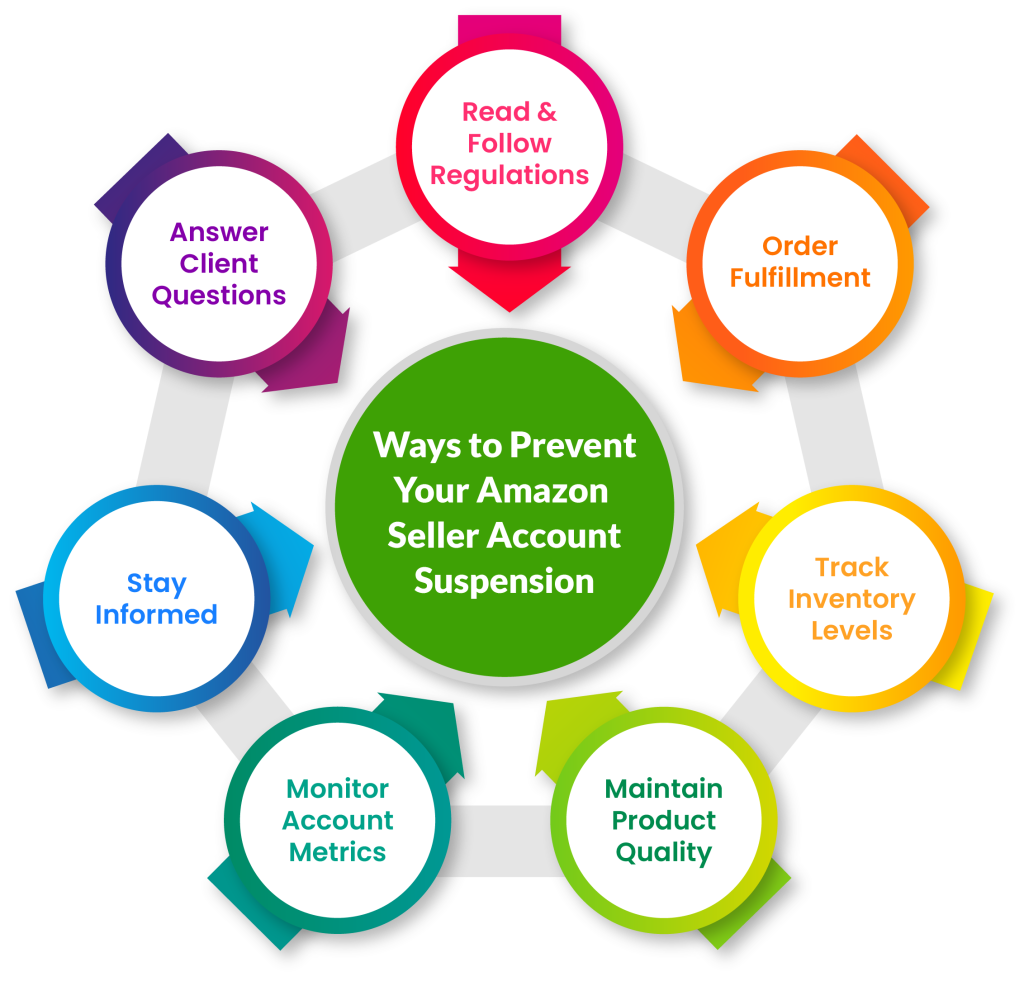
Handling Amazon Suspension: Prevention and Reinstatement Tactics
Selling on Amazon is a lucrative opportunity for brands, but one of the biggest setbacks sellers face is account suspension. Whether you’re a new seller or a seasoned one, understanding the causes of suspensions and how to handle them is critical for maintaining business continuity. In this guide, we’ll delve into Amazon account suspension, prevention strategies, and effective reinstatement tactics to get your account back up and running swiftly.

Understanding Amazon Account Suspension
Amazon has strict policies and guidelines to protect its customers and maintain the integrity of its marketplace. An account suspension occurs when Amazon identifies violations of these policies. Suspensions can result from a variety of reasons, including policy violations, poor performance metrics, or suspected fraudulent activity. Unlike account bans, suspensions are not permanent, and sellers have the opportunity to appeal and reinstate their accounts.
Types of Amazon Account Suspension:
- Performance-Related Suspension: Triggered by poor seller metrics such as a high Order Defect Rate (ODR), late shipments, or negative customer feedback.
- Policy Violation Suspension: Results from violating Amazon’s policies, including listing restrictions, selling counterfeit items, or infringing on intellectual property rights.
- Verification Suspension: Often happens during the initial account setup when Amazon is unable to verify your identity or business information.
- Restricted Product Suspension: Occurs when you list products that are prohibited or require approval for sale on Amazon’s platform.

Preventing Amazon Account Suspension
Prevention is always better than cure, especially when it comes to avoiding the disruption of an Amazon suspension. Here are some proactive steps you can take to minimize your risk:
1. Maintain High-Quality Listings
Ensure your product listings are accurate, complete, and compliant with Amazon’s guidelines. This includes providing clear product images, correct titles, detailed bullet points, and an accurate product description. Avoid misleading claims or keyword stuffing, as Amazon’s algorithm is designed to detect and penalize such practices.
2. Monitor Your Seller Metrics Regularly
Keep an eye on your performance metrics, including Order Defect Rate, Late Shipment Rate, and Pre-Fulfillment Cancellation Rate. Strive to keep these metrics well within Amazon’s target thresholds. Quick responses to customer inquiries and on-time shipments are essential for maintaining good metrics.
3. Comply with Amazon’s Policies
Familiarize yourself with Amazon’s policies and stay updated on any changes. Policies regarding product authenticity, customer feedback, and restricted items are constantly evolving. Regular audits of your listings and practices can help ensure compliance. If you’re unsure about a policy, seek clarification from Amazon support or your account manager.
4. Use Amazon FBA for Better Compliance
Fulfillment by Amazon (FBA) can help improve your metrics, as Amazon handles storage, packaging, and shipping. This can result in better on-time delivery rates, lower cancellation rates, and improved customer satisfaction, reducing the risk of suspension.
5. Protect Your Brand and Intellectual Property
Registering your brand with Amazon Brand Registry offers protection against counterfeit products and unauthorized sellers. It also provides enhanced tools for reporting and removing infringing listings. This helps prevent policy violations related to intellectual property.

Steps to Take If Your Account Is Suspended
Even with preventative measures in place, suspensions can still happen. If your Amazon account is suspended, don’t panic. Here’s what you should do:
1. Identify the Cause of the Suspension
Carefully read the suspension notification from Amazon. It typically outlines the reason for the suspension and the specific policy or performance metric you failed to meet. Understanding the exact cause is crucial for crafting an effective appeal.
2. Draft a Plan of Action (POA)
A strong Plan of Action is your ticket to reinstatement. Your POA should include:
- Root Cause Analysis: Identify what led to the suspension. Was it a policy violation, a product issue, or a performance metric failure?
- Corrective Measures: Explain the steps you’ve taken to resolve the issue. This could include removing problematic listings, updating your product descriptions, or implementing stricter quality checks.
- Preventive Steps: Detail how you plan to prevent similar issues in the future. For example, outline changes in your quality control processes, enhanced customer service training, or better inventory management practices.
3. Submit Your Appeal
Submit your appeal through Amazon’s Seller Central, following their guidelines for suspended accounts. Ensure your POA is clear, concise, and focuses on solutions rather than excuses. It’s important to remain professional and honest in your communication.
4. Follow Up with Amazon
After submitting your appeal, be patient but persistent. Amazon typically responds within a few days, but it’s not uncommon for the process to take longer. If you don’t receive a response within the expected timeframe, consider following up via Seller Central or contacting Amazon support for an update.
5. Seek Professional Help If Needed
If your appeal is denied or you’re unsure how to proceed, consider seeking help from a professional Amazon account management service. Experienced consultants can help you navigate the appeal process and increase your chances of reinstatement.

Best Practices for Long-Term Success
Once your account is reinstated, it’s important to implement changes to prevent future suspensions. Here are some best practices for long-term success on Amazon:
1. Conduct Regular Account Audits
Regularly audit your account to ensure compliance with Amazon’s policies. This includes reviewing your listings, checking for restricted products, and monitoring your seller metrics. Early detection of potential issues can prevent them from escalating into suspensions.
2. Invest in Customer Service
A strong customer service strategy can help mitigate negative feedback and resolve issues before they impact your metrics. Quick response times and proactive communication can go a long way in building a positive reputation.
3. Stay Informed About Amazon Policy Changes
Amazon frequently updates its policies, and staying informed is crucial for maintaining compliance. Subscribe to Amazon’s seller newsletter, participate in forums, and stay connected with your Amazon account manager to keep up with changes.
4. Utilize Amazon’s Tools for Enhanced Monitoring
Amazon provides various tools for sellers, including Account Health Monitoring and Brand Registry features. Make use of these tools to track your performance, monitor for potential policy violations, and protect your brand.
Conclusion
Amazon account suspension can be a major disruption to your business, but with the right strategies in place, it’s possible to prevent suspensions and effectively handle them if they occur. By maintaining high standards, staying compliant, and being proactive in monitoring your account, you can minimize your risk and ensure long-term success on Amazon.
If you’re struggling with a suspension or need help managing your Amazon account, our expert team is here to assist. Contact us today to learn how we can help you build a strong, compliant, and successful Amazon business.














